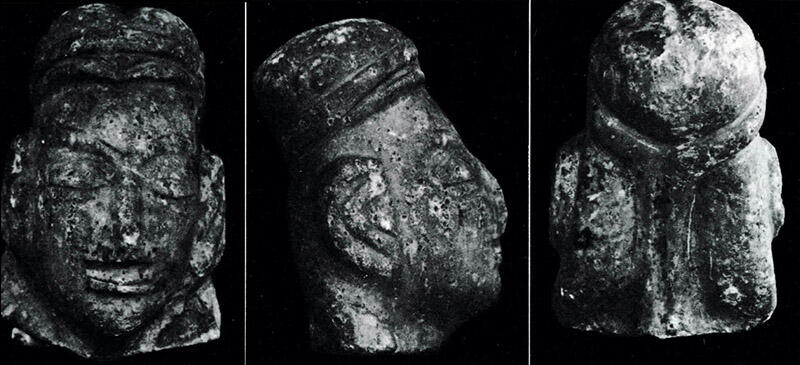The eminent archaeologist George F. Dales (1927-1992, author of Excavations at Mohenjo-Daro, Pakistan: The Pottery) looks at a "creamy buff soft stone" sculpture, just under 10 centimeters in height, that he was shown and photographed in Afghanistan in the early 1970s. Remarkably similar to the Mundigak head, which itself bears resemblances to the "priest-king" from Mohenjo-daro, Dales discusses how this head and another offers "an indication of an artistic sculptural tradition' within the Helmand civilization" (p. 222). While very careful to distinguish between the different stone sculptures found at Mohenjo-daro (there are few of these found at Indus sites, though some are of high quality, and not all have been published), he does note that four "iconographic and stylistic details common to the Afghanistan and one or another of the Mohenjo Daro sculptures are 1. the fillet descending in two flat bands at the back of their head, and having possible ornamentation in front 2. the distinctive rendering of the ears 3. the taut, sharply incised horizontal mouth 4. the smaller than life size scale" (p. 223).
This paper, published in 1985, is best read together with Massimo Vidale's more recent A Priest-King at Shahr-i Sokhta? (2018) where he explores more directly possible similarities between another Helmand Civilization sculpture and the so-called priest king.
Image: Three views of the sculptured head reportedly found in Afghan Sistan

